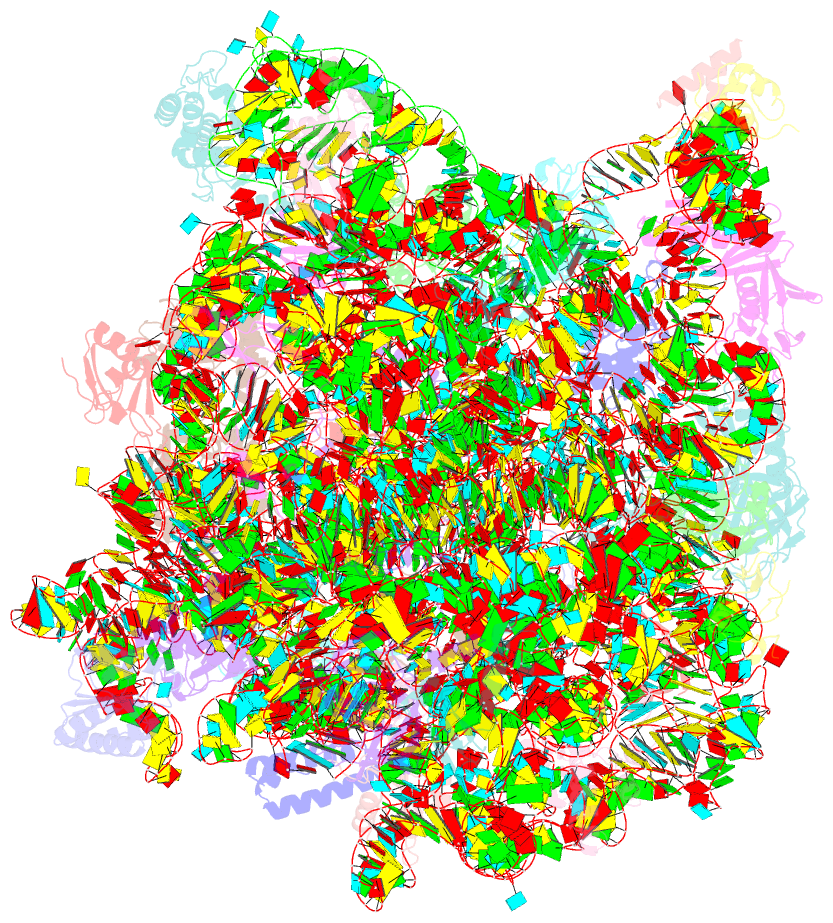Summary information and primary citation
- PDB-id
- 3ccl; SNAP-derived features in text and JSON formats;
DNAproDB
- Class
- ribosome
- Method
- X-ray (2.9 Å)
- Summary
- Structure of anisomycin resistant 50s ribosomal subunit: 23s rrna mutation u2535c. density for anisomycin is visible but not included in model.
- Reference
- Blaha G, Gurel G, Schroeder SJ, Moore PB, Steitz TA (2008): "Mutations outside the anisomycin-binding site can make ribosomes drug-resistant." J.Mol.Biol., 379, 505-519. doi: 10.1016/j.jmb.2008.03.075.
- Abstract
- Eleven mutations that make Haloarcula marismortui resistant to anisomycin, an antibiotic that competes with the amino acid side chains of aminoacyl tRNAs for binding to the A-site cleft of the large ribosomal unit, have been identified in 23S rRNA. The correlation observed between the sensitivity of H. marismortui to anisomycin and the affinity of its large ribosomal subunits for the drug indicates that its response to anisomycin is determined primarily by the binding of the drug to its large ribosomal subunit. The structures of large ribosomal subunits containing resistance mutations show that these mutations can be divided into two classes: (1) those that interfere with specific drug-ribosome interactions and (2) those that stabilize the apo conformation of the A-site cleft of the ribosome relative to its drug-bound conformation. The conformational effects of some mutations of the second kind propagate through the ribosome for considerable distances and are reversed when A-site substrates bind to the ribosome.





